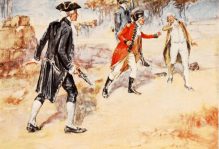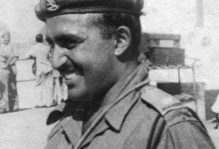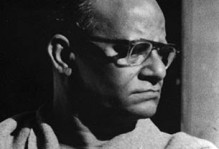Pilgrim’s Voyage: Calling on Rammohan Roy at Bristol
Editor’s Note: Why would one drive a 100 miles and risk missing a flight back home just to see a statue of a man who died more than 200 years ago, erected in a corner of a foreign land. On an offcial trip to London, Debashis literally made a dash from London to Bristol to see the statue of Raja Rammohan Roy. Was it reverence, awe or just novelty? This article by Debashis on his tryst with Raja Rammohan Roy at College Green, Bristol makes an interesting read.
April is the cruellest month, said Eliot. I have never been to England during April but because of my insurance profession and given the fact that major corporate policies generally get renewed on 1st April in India, I have been in London during March several times. Being from the city of Kolkata where but for the brief dalliance with winter we have to bear the sweltering tropical heat, March weather of London has also appeared to be quite ‘cruel’ to me. Presently living in Chennai for more than three years now, my body has got accustomed to basically three seasons- hot, hotter and hottest. This year when I boarded the flight for London it was the hotter phase in Chennai. Last year in London I had experienced sleet and sub-zero climate and as such was bracing myself up for an onslaught of icy wind so typical of London. However, as I stepped out of Paddington Station after taking the Heathrow express, I was pleasantly surprised to find a relatively warmer London welcoming me.
Next three days were hectic as usual, spent in the business districts around the hallowed Lloyds, with the usual quota of presentations, meetings and business lunches thrown in for more than good measure. On the penultimate day of my stay I came to know that Dr. Debashis Kumar, a singularly peripatetic friend of mine from the school days, is reaching London from Kolkata in the evening. We were elated at the prospect of meeting in London of all places and catching up with each other, talking about the good old days spent in Uttarpara, a Kolkata suburb. Kumar, as he is known among our school friends to ensure differentiation from four others, including your’s truly, who shared the same first name., announced over phone that he has to visit Bristol the next day and would like to meet me before he leaves London. The very mention of Bristol struck a chord in my mind. I had a meeting at 9.30 in the morning the next day and my flight back to India was at 9 in the evening. I had an eminently probable nine hours at my disposal. Could I possibly utilise this to fulfil a long cherished desire of mine?
I have always been fascinated by the larger than life persona of Raja Rammohan Roy, the true harbinger of Indian renaissance. It is amazing the way someone born in the eighteenth century Bengal stood firmly against all sorts of social bigotry, conservatism and superstitions. Here was a man, much before Mao, who believed that women are half the sky and fought for their rights. What continues to amaze me is his adventurous spirit which defies the value system prevailing in his time. He went to Patna to study Arabic and Persian. He went to Varanasi to study Sanskrit. As far as I know, he probably travelled to Tibet as well. And of course he dared to cross the kalapani and travelled to England where he breathed his last in 1833. I only knew that his mausoleum is at some cemetery in Bristol and a statue of him has been erected somewhere there. I decided to pay my respect to this great man by making a visit to Bristol along with my doctor friend.
We were handicapped by the fact that my cellphone did not have a net connection in UK and due to paucity of time my friend, who arrived the night before, could not get net connectivity for his cellphone. We started from London at around 10.30 in the morning. It was a glorious day with an azure sky bathed in bright sunshine. Our Iranian driver asked us whether we would be interested in visiting Bath en route. I knew Cotswold villages were not far away from Bath. English villages fascinate me for their breathtaking beauty and their languid, unhurried pace of life. So giving touristy Bath a slip we descended upon Castle Coombe, a relatively undiscovered gem set deep in a coombe( steep sided river valley) to have a very British lunch of lamb chop and ale.
As we approached Bristol we found that the motorway was a bit congested and apparently people were heading for their desired weekend destinations. The thought at the back of my mind was that I had to be back at Heathrow by 7 in the evening to catch my return flight. Finally we made it to Bristol at around 3 in the afternoon. Now the biggest challenge was to find the mausoleum and the statue without the help of internet. The vehicle had GPS but we did not have slightest clue about the place. The Britishers are not exactly known for evincing friendliness to strangers and the name of Rammohan would not be known to them. After a few unsuccessful attempts we thought that it would be better to try our luck in a more academically inclined surrounding, as was suggested over phone by a friend of Kumar. We then proceeded to Bristol Centre on College green. As our car was nearing the picturesque oval ground we had our moment of serendipity. At one corner in a prominent place the statue of Rammohan could be seen.
As we stood in silence in front of the bronze statue sculpted by Niranjan Pradhan, oblivious to the traffic all around, a magical breeze started blowing from the side of river Avon, as if in obeisance to the great soul. I thought of the fateful day in 1833 when he breathed his last as a result of an attack of meningitis, thousands of miles away from home in an alien land fighting for a cause. He came to England as a representative of the Moghul emperor to petition for his pension but his final mission went far beyond this. I was also wondering how he withstood vitriolic attacks throughout his life. He was ridiculed even in popular culture and songs like ‘Surai meler kul byatar bari khanakul’ was composed to make fun of him. He was the first person who taught us to question, to argue, to think rationally and opened the windows of the world for us. I almost felt blessed and got a lump in the throat as I stood silently in front of the statue for a long time. The shadows were getting longer and it was time to go back. There was no time to search for the mausoleum.
Later I searched the net and found a few pertinent details which may be of interest for future pilgrims like me. Rammohan was originally buried in Stapleton Grove where he died on 27th September in 1833. He was reburied at Arnost vale cemetery about ten years later. A mausoleum with an epitaph was erected there. The epitaph describes him as ‘a conscientious and steadfast believer in the unity of godhead’. I, however, believe that at the end of the day his focus was on humanity in general and his countrymen in particular. To complete the pilgrimage I shall have to visit Bristol again to be near the mortal remains of this giant of a man. Surely, I shall.
Note from Editorial Team: The statue of Rammohan Roy almost came not to be. In 1997, the statue of Roy crafted by the famous Kolkata based sculptor Niranjan Pradhan, was gifted by the Government of India to the city of Bristol. The installation of the statue came under controversy with a section of the Bristol citizens questioning why a non-Bristolian should be accorded such a privilege at a prime location in the Bristol cityscape. It was Carla Contractor , a resident of Bristol and a great admirer of Roy, who took upon herself to canvass support for the installation of the statue at College Green, a prominent location in the Bristol city centre. Her logic was simple - Rammohun Roy’s greatness blurs national boundaries and Bristol was surely right to honour such a man in this city where he died. Her pitch convinced the residents of Bristol. Carla has also led a tireless campaign to restore the mausoleum of Raja Rammohun Roy in Arnos Vale, Bristol. A special thanks to Carla from probashionline.com.





